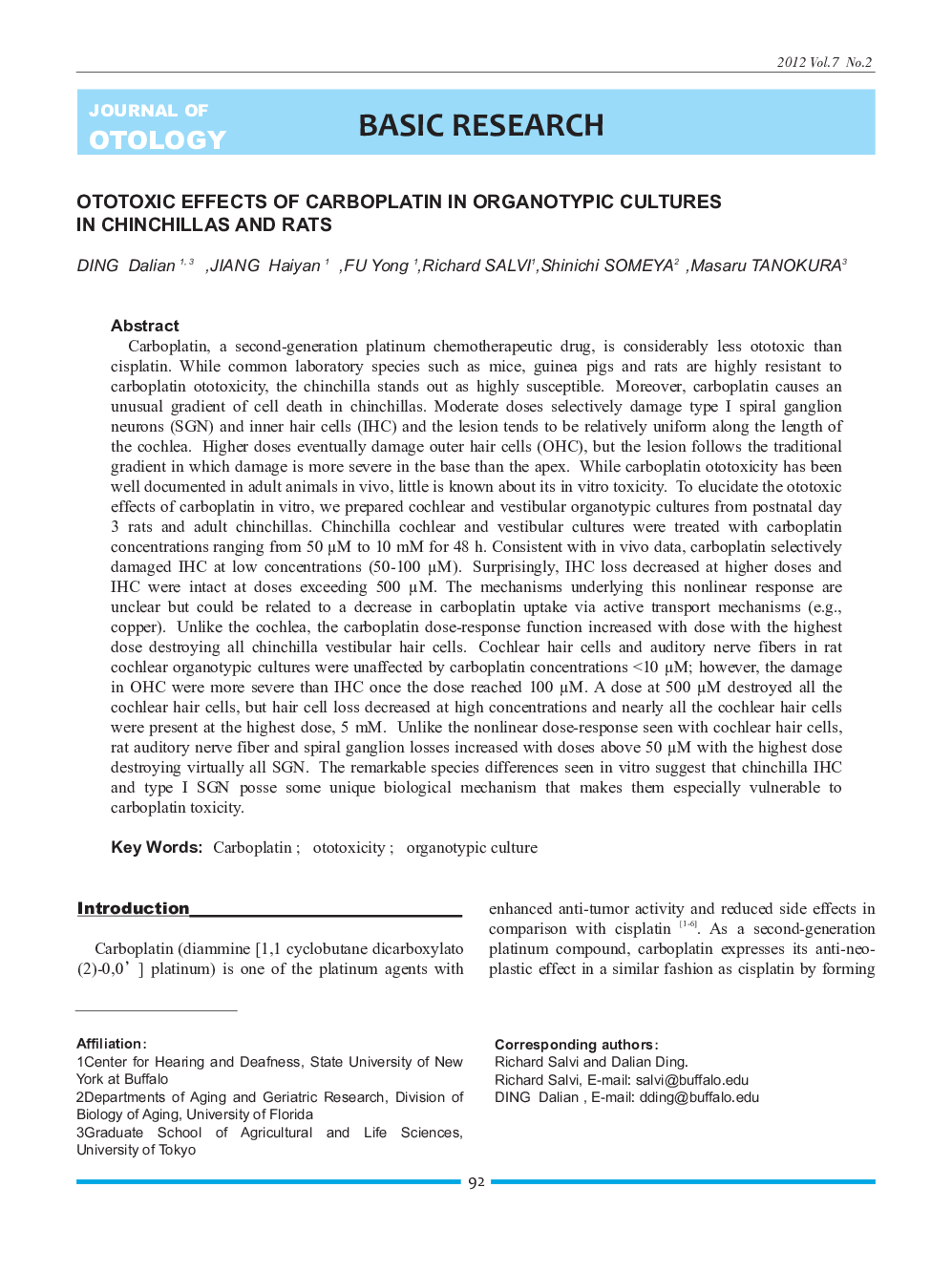| Article ID | Journal | Published Year | Pages | File Type |
|---|---|---|---|---|
| 4116696 | Journal of Otology | 2012 | 11 Pages |
Carboplatin, a second-generation platinum chemotherapeutic drug, is considerably less ototoxic than cisplatin. While common laboratory species such as mice, guinea pigs and rats are highly resistant to carboplatin ototoxicity, the chinchilla stands out as highly susceptible. Moreover, carboplatin causes an unusual gradient of cell death in chinchillas. Moderate doses selectively damage type I spiral ganglion neurons (SGN) and inner hair cells (IHC) and the lesion tends to be relatively uniform along the length of the cochlea. Higher doses eventually damage outer hair cells (OHC), but the lesion follows the traditional gradient in which damage is more severe in the base than the apex. While carboplatin ototoxicity has been well documented in adult animals in vivo, little is known about its in vitro toxicity. To elucidate the ototoxic effects of carboplatin in vitro, we prepared cochlear and vestibular organotypic cultures from postnatal day 3 rats and adult chinchillas. Chinchilla cochlear and vestibular cultures were treated with carboplatin concentrations ranging from 50 μM to 10 mM for 48 h. Consistent with in vivo data, carboplatin selectively damaged IHC at low concentrations (50-100 μM). Surprisingly, IHC loss decreased at higher doses and IHC were intact at doses exceeding 500 μM. The mechanisms underlying this nonlinear response are unclear but could be related to a decrease in carboplatin uptake via active transport mechanisms (e.g., copper). Unlike the cochlea, the carboplatin dose-response function increased with dose with the highest dose destroying all chinchilla vestibular hair cells. Cochlear hair cells and auditory nerve fibers in rat cochlear organotypic cultures were unaffected by carboplatin concentrations < 10 μM; however, the damage in OHC were more severe than IHC once the dose reached 100 μM. A dose at 500 μM destroyed all the cochlear hair cells, but hair cell loss decreased at high concentrations and nearly all the cochlear hair cells were present at the highest dose, 5 mM. Unlike the nonlinear dose-response seen with cochlear hair cells, rat auditory nerve fiber and spiral ganglion losses increased with doses above 50 μM with the highest dose destroying virtually all SGN. The remarkable species differences seen in vitro suggest that chinchilla IHC and type I SGN posse some unique biological mechanism that makes them especially vulnerable to carboplatin toxicity.
